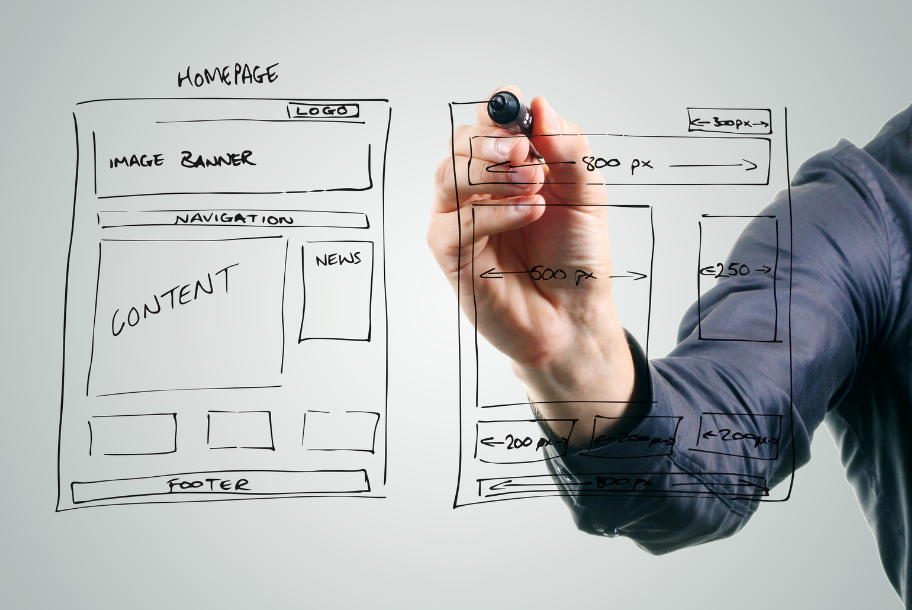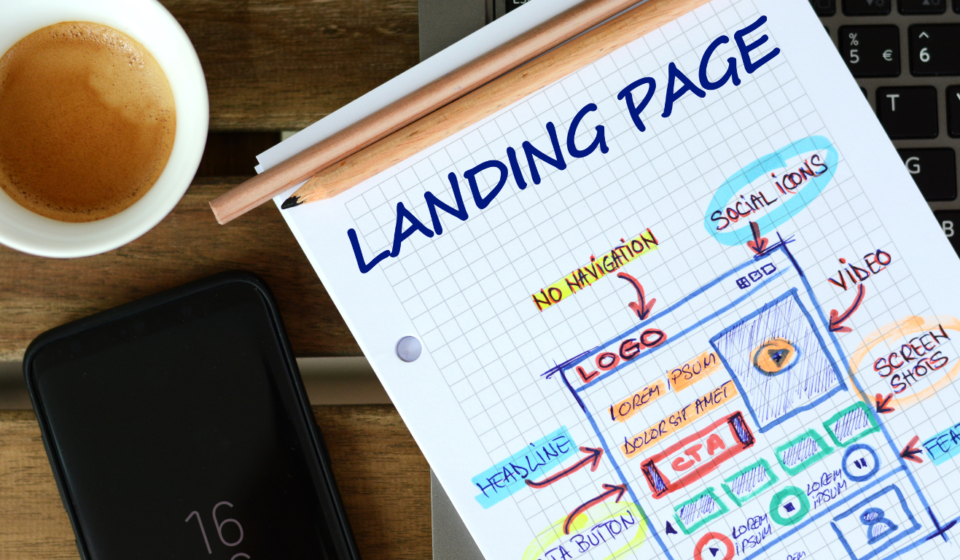Unlocking the Power of Landing Pages: Shaping Your Digital Footprint
In today's dynamic and interconnected world, having an engaging online presence for your business is no longer merely a choice—it's a fundamental requirement. A thoughtfully designed landing page acts as your virtual showcase, your digital introduction, and your access point to the global audience. Here, we delve into the crucial significance of landing pages and delve into the distinguishing features that elevate the finest landing pages above the rest.
WordPress Ad
Webflow Ad
Why Landing Pages Matter:
In the digital age of constant connectivity and vast opportunities, creating a compelling online presence for your business is no longer just a choice—it’s an absolute necessity. A well-crafted landing page transforms into a virtual showcase for your brand, a digital introduction, and a way to connect with a global audience. Here, we dive into the crucial importance of landing pages and explore the standout features that make the best landing pages truly exceptional.
- Engage Global Audience: Landing pages transcend geographical boundaries, enabling you to connect with audiences worldwide, expanding your reach beyond local limits.
- Create Brand Identity: A well-crafted landing page serves as a canvas to express your brand’s values, personality, and uniqueness, leaving a memorable imprint on visitors.
- Drive Conversions: Focused on specific offerings, landing pages guide visitors toward desired actions, such as sign-ups, purchases, or inquiries, boosting your conversion rates.
- Enhance User Experience: Tailored content and design on landing pages provide a personalized and engaging experience, increasing user satisfaction.
- Boost Advertising ROI: For advertising campaigns, dedicated landing pages align with ad messaging, improving relevancy and leading to higher ad conversion rates.
- Gather Data and Insights: Landing pages enable you to collect valuable user data, helping you understand preferences, behaviors, and improving future marketing strategies.
- Facilitate A/B Testing: Landing pages are ideal for A/B testing different elements like headlines, visuals, and CTAs to optimize performance over time.
- Optimize for SEO: Landing pages can be optimized for specific keywords, improving your website’s visibility in search engine results and driving organic traffic.
- Showcase Offers: Promoting a single product, service, or offer on a landing page minimizes distractions, keeping the focus solely on what you’re promoting.
- Measure Effectiveness: The focused nature of landing pages makes it easier to track performance metrics, providing clear insights into the success of your marketing efforts.
- Quick Launch for Campaigns: Landing pages can be created quickly to complement specific marketing campaigns, ensuring timely and effective promotion.
- Tailor Content to Audience: Segmented landing pages allow you to customize content for different audience segments, addressing specific needs and interests.
- Mobile Optimization: With the increasing use of mobile devices, responsive landing pages cater to users on various screen sizes, ensuring a consistent experience.
Opting for a landing page. Advantages unveiled:
When deciding between a full-fledged website and a focused landing page, consider the unique advantages that landing pages offer.
Precision and Focus: Landing pages are laser-focused on a single goal, such as promoting a specific product, service, or campaign. This streamlined approach eliminates distractions and maximizes the chances of achieving your desired outcome.
Enhanced Conversion Rates: With a dedicated focus on conversions, landing pages are designed to encourage visitors to take a specific action, leading to higher conversion rates compared to multi-purpose websites.
Tailored Messaging: Landing pages allow you to craft tailored messaging that directly addresses your audience’s needs and pain points, fostering a stronger connection and engagement.
Swift Deployment: Creating a landing page is quicker than developing an entire website. This agility is especially beneficial for time-sensitive promotions or campaigns that demand immediate online presence.
Optimized Advertising: When paired with online advertising efforts, landing pages boost the relevancy of ad campaigns. A seamless transition from ad to landing page enhances user experience and improves conversion rates.
Easy Tracking and Analysis: The focused nature of landing pages makes tracking user behavior and analyzing performance straightforward. You gain actionable insights that facilitate informed decision-making.
Cost-Efficiency: Landing pages are cost-effective alternatives, particularly for short-term marketing initiatives. You can allocate resources efficiently and achieve measurable results without the commitment of a full website.
A/B Testing: Landing pages offer an ideal environment for A/B testing, allowing you to experiment with different elements and refine your approach to enhance performance over time.
Elevated Relevance: For specific audience segments or targeted campaigns, landing pages deliver a tailored message that resonates deeply, enhancing relevance and user engagement.
Simplicity and Clarity: The simplicity of landing pages ensures that visitors swiftly comprehend the value proposition and desired action, leading to quicker decision-making.
Ultimately, choosing a landing page over a website depends on your objectives and the context of your campaign. Landing pages excel in delivering focused, high-impact messaging that drives conversions, making them an indispensable tool for marketers seeking immediate and precise results.

Webflow Ad
Features of the Best Landing Pages:
By weaving these elements seamlessly, your brand emerges as a distinctive presence in the vast expanse of the online realm. Your Landing Page becomes a masterpiece that not only exudes visual allure but also orchestrates an unparalleled user journey, setting you apart with elegance and engagement.The finest landing pages exhibit a combination of key elements that captivate, engage, and drive conversions. Here’s what sets the best landing pages apart:
Clear and Compelling Headline: An attention-grabbing headline concisely communicates the offer’s value proposition, piquing visitors’ interest from the moment they arrive.
Concise Copy: The copy is concise, impactful, and directly aligned with the headline, elaborating on the offer’s benefits and guiding users toward the desired action.
Strategically Placed Visuals: Relevant visuals, such as images or videos, enhance understanding and create an emotional connection, contributing to a memorable user experience.
Focused Call-to-Action (CTA): A prominent and compelling CTA directs users toward the intended action. It’s succinct, action-oriented, and stands out from the rest of the content.
Minimalist Design: A clean and clutter-free design minimizes distractions, keeping the focus solely on the offer and the desired action.
Mobile Responsiveness: Landing pages must be optimized for mobile devices, ensuring seamless navigation and readability across various screen sizes.
Trust Signals: Trust-building elements, such as customer testimonials, reviews, badges, or security certifications, establish credibility and alleviate potential concerns.
Benefits Highlight: Clear and concise bullet points or sections highlighting the main benefits of the offer reinforce the value proposition and aid in quick scanning.
Form Optimization: If a form is present, it’s short and asks for minimal information. Reducing friction in form submission encourages more users to convert.
Urgency and Scarcity: Incorporating elements that convey urgency or scarcity, such as limited-time offers or countdown timers, encourages immediate action.
Social Proof: Displaying evidence of others benefiting from the offer, like case studies or success stories, bolsters the credibility and persuasiveness of the landing page.
Singular Focus: Landing pages focus solely on the offer at hand, preventing distractions from unrelated content that could dilute the user’s attention.
Relevant and Targeted: The landing page aligns seamlessly with the traffic source, ensuring that users experience consistency from the ad or link that led them there.
Tracking and Analytics: Implementing tracking codes allows you to measure performance, analyze user behavior, and refine your approach for continuous improvement.
A/B Testing: Regularly testing different elements, such as headlines, CTAs, visuals, and forms, helps optimize the landing page for higher conversion rates.
Thank-You Page: After conversion, a well-designed thank-you page confirms the action, provides any necessary follow-up steps, and encourages further engagement.
The best landing pages are purpose-built, meticulously crafted to guide visitors seamlessly toward taking a specific action, whether it’s signing up, purchasing, or engaging further with your brand.
Selecting between WordPress and Webflow: Deciphering the Choice
The decision between WordPress and Webflow hinges on your specific needs, preferences, and project scope. Here’s a breakdown of why you might opt for one over the other:
WordPress:
Ease of Use: WordPress boasts a user-friendly interface, making it accessible for both beginners and experienced users.
Vast Plugin Library: Its extensive plugin ecosystem offers versatility, allowing you to add diverse functionalities without intricate coding.
Content Management: If content creation and management are paramount, WordPress excels as a blogging and content-focused platform.
Scalability: With a myriad of themes and plugins, WordPress can scale from small websites to complex, feature-rich platforms.
Open Source Community: Its open-source nature fosters a thriving community, offering resources, support, and continuous updates.
E-commerce Capability: WordPress can power e-commerce websites with plugins like WooCommerce, ideal for online stores.
Webflow:
- Design Flexibility: Webflow provides unparalleled design control, enabling designers to create intricate and unique layouts without coding limitations.
- Responsive Design: It’s built with responsive design at its core, streamlining the process of creating websites that look and function seamlessly across devices.
- Visual Editing: The visual editor empowers designers to see real-time changes as they design, facilitating a more intuitive and interactive workflow.
- Hosting Integration: Webflow offers seamless hosting within its platform, simplifying the process of publishing and managing websites.
- Code Control: Webflow’s Designer and CMS plans allow you to access and edit the generated code, bridging the gap between visual design and custom coding.
- Efficient Workflow: Webflow reduces the back-and-forth between designers and developers, as it caters to both aspects within a single environment.
- Designer-Centric: Webflow is particularly well-suited for designers who want more creative control without sacrificing usability.
In essence, choose WordPress if you seek a robust, user-friendly, and highly customizable platform with extensive plugin options. Opt for Webflow if your priority lies in unparalleled design control, responsive layouts, and a streamlined visual workflow that caters to designers and developers alike. The choice ultimately depends on your project’s requirements, short and long term goals and desired level of creative freedom






Full Websites
America
CULTURAL
Lorem ipsum dolor sit amet, consectetur adipiscing elit. Nunc ut efficitur ante.
SEO
America
CULTURAL
Lorem ipsum dolor sit amet, consectetur adipiscing elit. Nunc ut efficitur ante.
Branding
America
CULTURAL
Lorem ipsum dolor sit amet, consectetur adipiscing elit. Nunc ut efficitur ante.
Maintenence
Europe
CULTURAL
Lorem ipsum dolor sit amet, consectetur adipiscing elit. Nunc ut efficitur ante.
